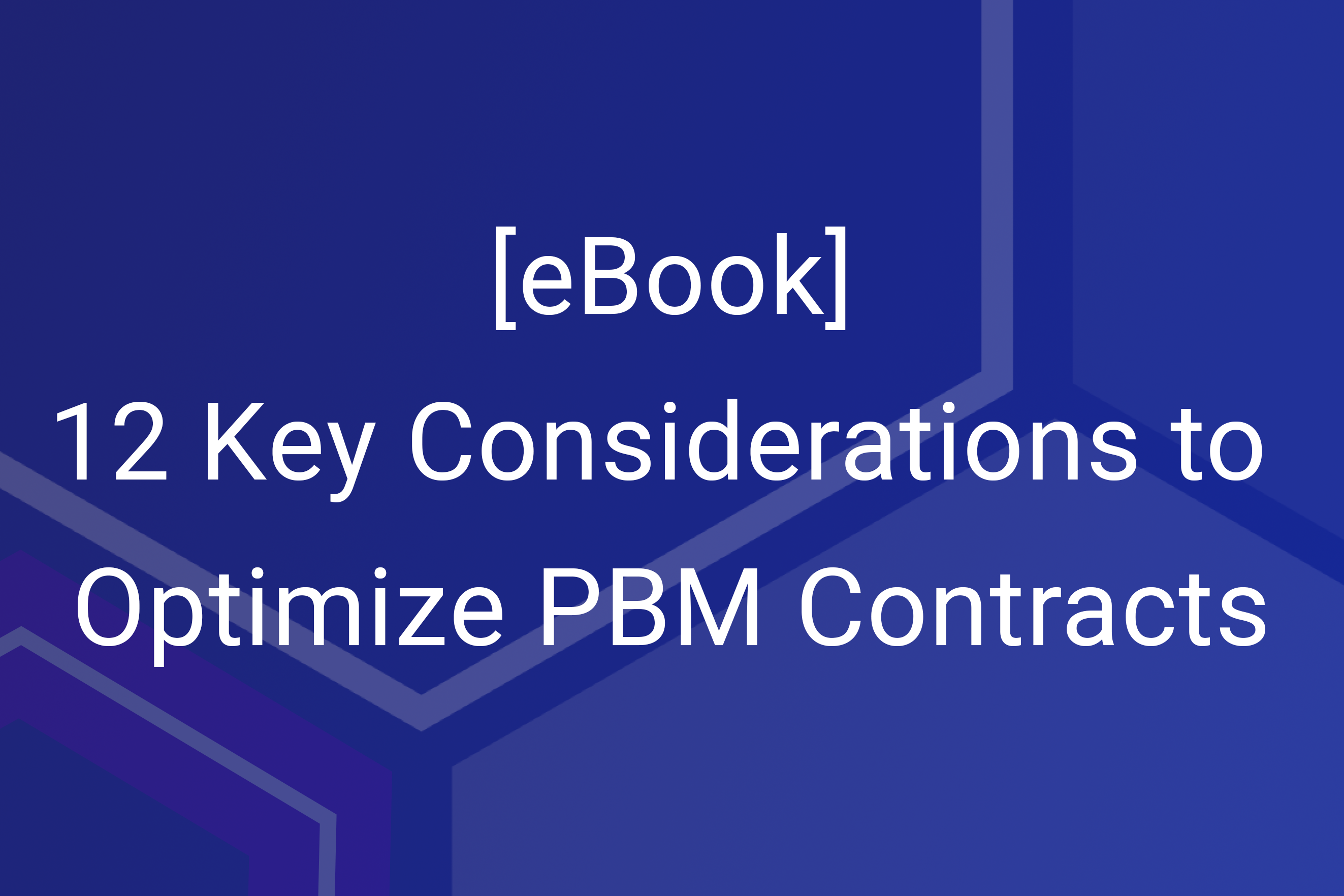With the rising cost of prescription medications, the volume of new drugs coming into the market, and wide variations in the way that pharmacy benefit managers (PBMs) determine coverage, it is becoming increasingly challenging for payers to compare the true costs of PBM options and to then identify the one that best meets the needs of their organization. Understanding the ins and outs of a drug formulary is essential to making an informed decision on which PBM to select for your members.
What is a drug formulary?
In essence, a drug formulary is a continually updated list of covered prescription medications that PBMs develop and maintain for their clients.
This naturally leads to a related question about the list: what is a formulary drug? A formulary drug list will include branded and generic drugs that have been recommended to the PBM by a multidisciplinary Pharmacy and Therapeutics (P&T) committee of physicians, pharmacists, and other healthcare professionals. The P&T committee is responsible for developing, reviewing, and updating the formulary list so that it reflects the most current clinical guidelines, FDA-approved prescribing protocols, published literature, and clinical trial results.
The power of drug formularies is that they influence which drugs members use. Formulary drugs also determine out-of-pocket costs. If a plan member is prescribed a drug that is on the drug formulary, the payer covers some, most, or all of the cost. If the prescribed drug is not included on the formulary, the payer will not cover or share the cost.
The final formulary list also reflects the outcomes of PBM efforts to aggregate purchasing power and lower the drug costs through negotiations with pharmaceutical manufacturers and pharmacies.
How does a drug formulary work?
The prescription drug coverage and benefits of a PBM – as well as the costs to payers and members – are based on the formulary structure. In addition, the preferential tiering framework and whether the formulary list is open or closed also impact coverage and costs.
Open Formulary
An open formulary provides coverage for virtually all drugs available for any given therapeutic class, with the possible exception of over-the-counter drugs and those for cosmetic use. The defining characteristics of an open formulary arrangement is freedom of choice to members, which, predictably, comes with higher costs to the plan.
Closed Formulary
A closed formulary is one in which non-formulary drugs (both branded and generic) are not reimbursed by the payer. If a physician prescribes an excluded medication, the member will be required to pay the full retail cost of the drug or request that the provider prescribe a formulary drug in the same therapeutic class. Formulary exception policies allow providers and patients to request coverage for non-formulary medications when medically appropriate. Shifting from an open to closed formulary generally has cost savings implications for payers – try the Truveris Savings Calculator to see how this lever impacts cost.
Formulary Ranking & Drug Formulary Tiers
Formularies also rank groups of drugs into value-based classifications, or tiers, that determine the level of coverage that the health plan will provide. Drugs in the lowest tier (usually generic drugs) have the smallest patient cost-sharing, and those in the top tier (typically brand name and specialty drugs) have the highest patient out-of-pocket costs.
Formulary Management Policies
The value of pharmacy benefits plans to patients and payers is also influenced by multiple additional formulary management policies designed to contain costs and control quality, including the following:
- Drug benefit caps, prior authorization, and step therapy requirements, which dictate that lower-cost drugs must be prescribed before more expensive alternatives.
- Methodologies for evaluating clinical and medical literature to guide the selection of medications for different diseases, conditions, and patients.
- Policies and procedures for the procuring, dispensing, administering, and appropriately utilizing medications.
- Prescribing guidelines and clinical information designed to promote high-quality, affordable care for patients.
The challenge of choosing the optimal prescription drug program for a given organization is further exacerbated by the fact that PBMs frequently update and revise their lists of formulary drugs vs non-formulary drugs. This means the PBM updates the drug formulary list to add newly approved drugs, include or exclude existing drugs based on contracts with manufacturers, and reevaluate tier placement.
Keeping up to date on drug formulary
Understanding these variables is critical to bridging the information gap that currently exists in the pharmacy benefits ecosystem. Sophisticated negotiation and procurement solutions can help payers and employers navigate the complex and highly variable PBM landscape and select an option that will deliver the best clinical and financial outcomes.
For example, the Truveris Marketplace, a competitive procurement platform, leverages industry expertise and advanced analytics to generate a real-time assessment of the PBM market relative to the specific needs of a given organization. The solution connects plan sponsors to PBMs and other pharmacy solution partners to drive competition. The solution then analyzes every plan bid to ensure forecasting and pricing accuracy and delivers an objective summary of results. Our team of experts shepherds the entire process from pre-bid analytics, to distributing and developing the RFP, to analyzing bids, awarding winners, implementing the plan and monitoring contract adherence and performance through the term of the contract.
As in all situations, information is power when it comes to choosing a PBM. Arming yourself with a thorough and accurate appraisal of the available options with regards to drugs formulary is the key to building a strong PBM partnership and meeting cost and clinical objectives.
Truveris is a leading digital health company focused on delivering truth and clarity in pharmacy. Truveris’ proprietary technology, coupled with deep pharmacy expertise, helps to build a more efficient market that maximizes choice, accessibility and prescription drug affordability. Our solutions provide the insight and knowledge to help people lead healthier and more productive lives.
*This article was originally published on Jul 15, 2021 and was updated on Jan 29, 2024.







